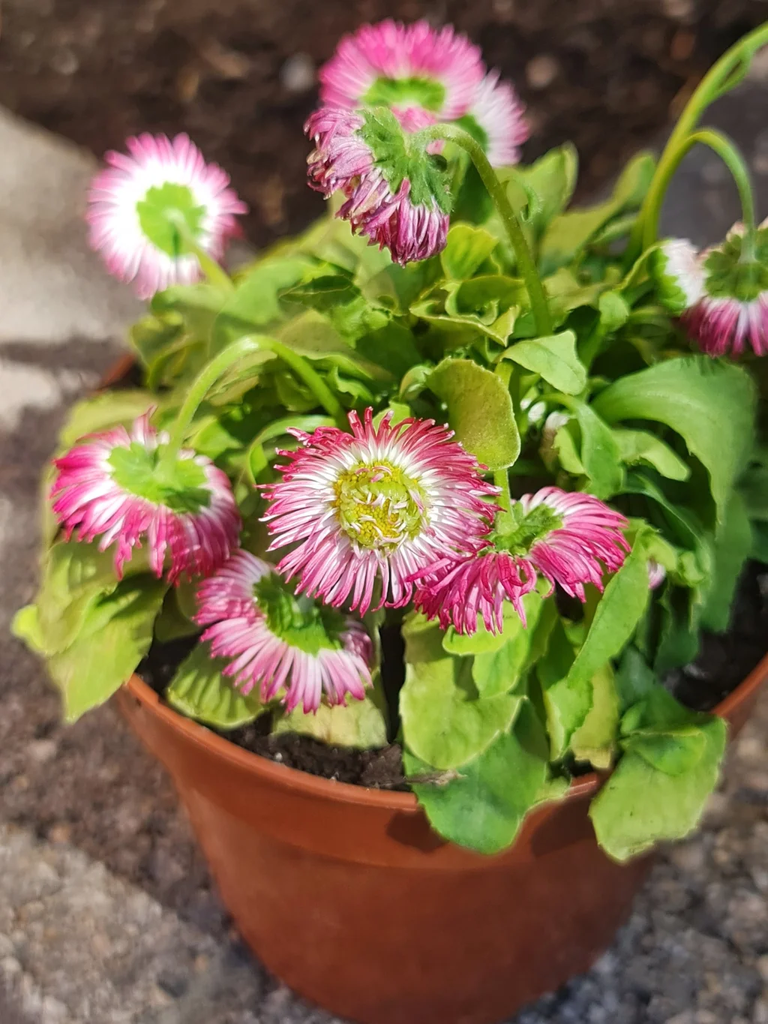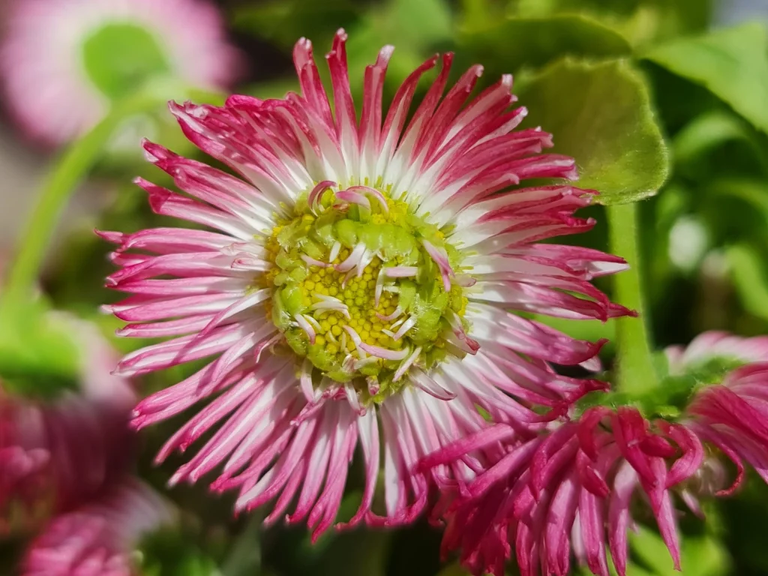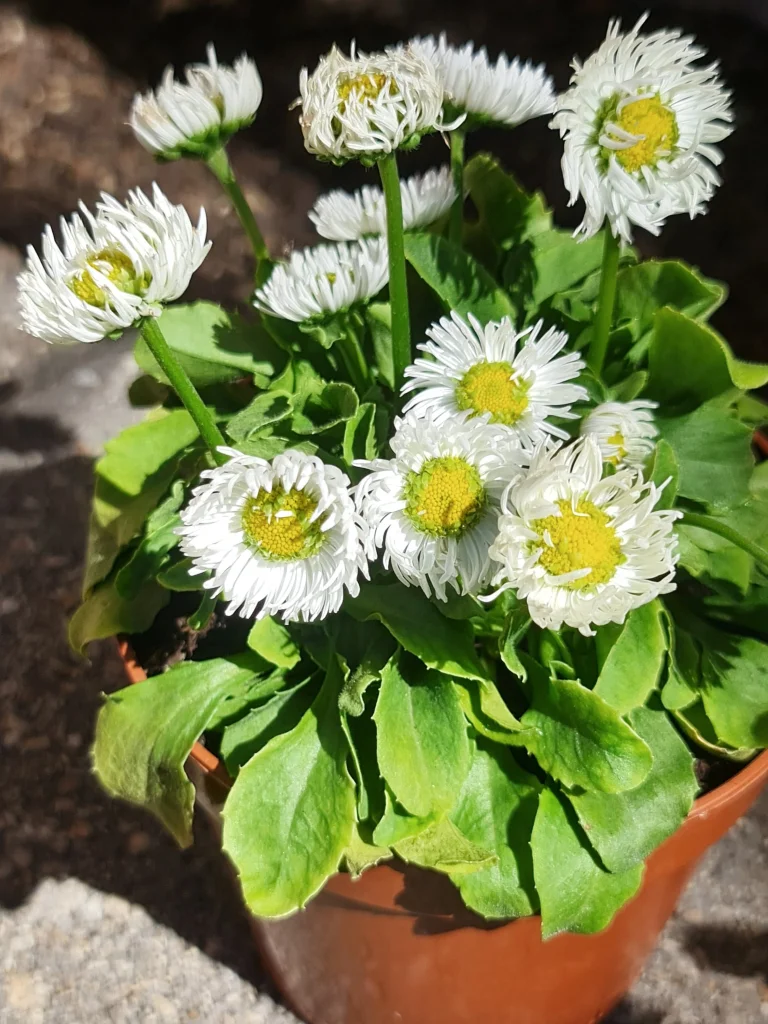
English Daisies (Bellis perennis) are a plant that I’ve long overlooked. Sure, I knew it was a wound healer but I much preferred it for its beauty in the garden. This season, though, I’ve decided to focus on it a little. There’ll be a page on this sunny herb soon. It’ll be easy to find if you want to experiment yourself, it’s in all the garden centres now. ‘Bellis‘ means ‘pretty’ or ‘beautiful’ and ‘perennis‘ means ‘always’ or ‘every year’.
The old name for English Daisies is ‘Bruisewort’. The ‘wort’ part of many herb names that you see is from the old language and means just ‘plant’. Bruisewort, is then a plant that excels at healing bruises. Our names for it – ‘Common Daisy’ or ‘English Daisy’ don’t sound nearly as good.
British history tells us that, during the invasion of Britain, the Roman army would send out slaves to harvest Bruisewort by the tonne (or whatever measurement they used back then). Injured soldiers would be treated with Bruisewort for many of their injuries, some of which, often coming from swords, were considerable. It was brought to Australia during the British invasion and became a very popular garden plant. There are many types of Native Australian daisies, so gardeners knew that the conditions were right for it to thrive.

Bellis perennis (I like the botanical name so much more than any other) is a perennial that grows from short rhizomes bit it is the flower that we grow it for as gardeners. The flower comes in the second year, just after Summer when there have been a few cool days. Those in the garden centres now have been induced with a little artificial cooling.
To use Bellis as an herb, we crush its leaves and apply the juice directly to wounds. It excels at treating bruises (as its old name suggests – for that, a poultice of the crushed plant works nicely. Bellis, as a bruise healer, has several big advantages over the other herb commonly used for that type of injury – Arnica. First, Bellis is easy to grow here in South Oz and pretty well everywhere else in the world apparently. I don’t know of anybody growing Arnica in any of my Australian circles of friends. The second benefit that Bellis has for us is that it can be applied directly to open wounds. That’s a great advantage because Arnica is toxic if it gets into the bloodstream or is digested in any but Homeopathic doses.
You can use any part of a Bellis perennis plant herbally but the most common parts used are the leaves and flowers. I’m using the juice from the leaves at the moment, as the flowers have just started and I want to enjoy them for a little while – they’re be plenty of them in a while. As the season progresses, I’ll experiment with making a succus and tincture so that I can store it for a while and I want to make a Bellis salve and a Bellis flower essence too . Of course, I’ll post about each of those as I make and try them.

Some of you may have seen that I've been writing a series of posts about herbs and making herbal remedies at home. I want to share what I know of this topic so that, as the world gets crazier, folks will have other avenues of medical care, namely those of themselves and their community. If you look back over this blog, you can see heaps of info on the topic, plus loads and loads of posts on herbs and using Australian bushfoods from a white perspective. If you haven't been around on in the @hivegarden and @naturalmedicine communities for long, you may be interested in looking back. There's w-a-a-a-a-y too much there for me to repost and the Hive system doesn't let you vote on old posts so, if you're happy with what you find, I believe that there is now a tip option...







